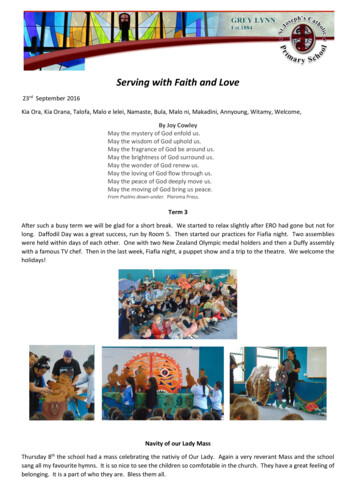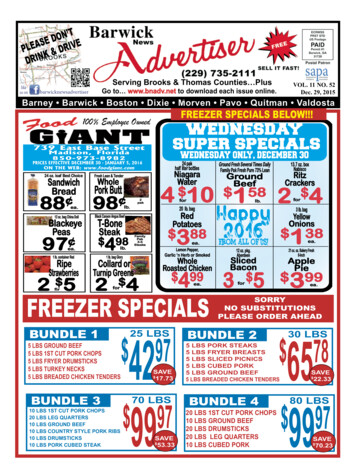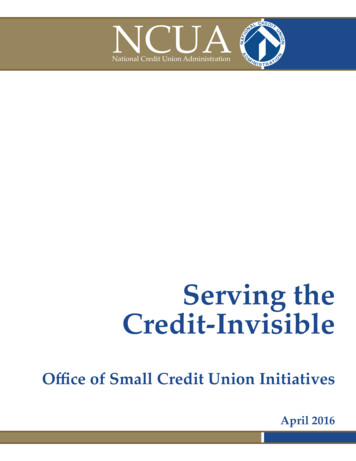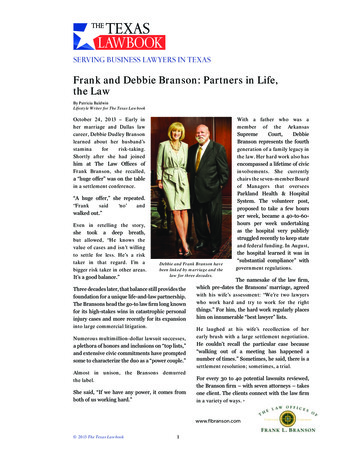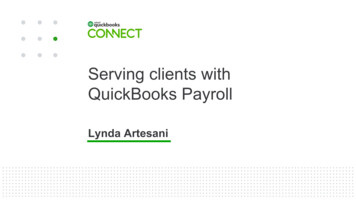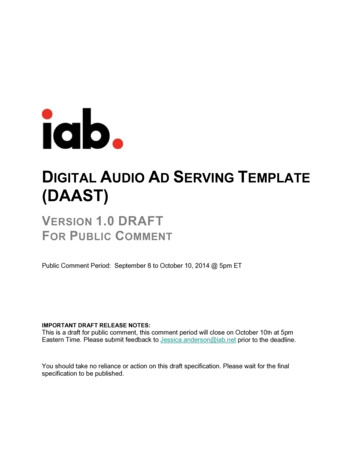
Transcription
DIGITAL AUDIO AD SERVING TEMPLATE(DAAST)V ERSION 1.0 DRAFTF OR P UBLIC C OMMENTPublic Comment Period: September 8 to October 10, 2014 @ 5pm ETIMPORTANT DRAFT RELEASE NOTES:This is a draft for public comment, this comment period will close on October 10th at 5pmEastern Time. Please submit feedback to Jessica.anderson@iab.net prior to the deadline.You should take no reliance or action on this draft specification. Please wait for the finalspecification to be published.
This document has been developed for the IAB Audio CommitteeThe Digital Audio Ad Serving Template (DAAST 1.0) specification was created by a workinggroup of volunteers from 28 IAB member companies.The Digital Audio Ad Serving Template (DAAST) Working Group was led by:Chris Doe, VINDICOBenjamin Masse, Triton DigitalThe following IAB member companies contributed to this document:AbacastAdswizzAha RadioApple Inc. (iAd)CBS InteractiveClear Channel Media andEntertainmentcomScoreDial GlobalErnst & YoungGoodway GroupGoogleKatz 360Microsoft AdvertisingMirror Image InternetNational Public MediaNRG MediaPandoraPROXi DigitalSETSmartclipSpotifyTargetSpotTriton DigitalTuneInUnivision CommunicationsInc,VINDICOWestwood OneXappMedia, Inc.ZEDOThe IAB leads on this initiative were Jessica Anderson and Katie StroudContact jessical.anderson@iab.net to comment on this document.ABOUT THE IAB’S AUDIO COMMITTEEThe Digital Video Committee of the IAB is comprised of over 180 member companies activelyengaged in the creation and execution of digital video advertising. One of the goals of thecommittee is to implement a comprehensive set of guidelines, measurement, and creativeoptions for interactive video advertising. The Committee works to educate marketers andagencies on the strength of digital video as a marketing vehicle.A full list of Committee member companies can be found at:http://www.iab.net/audio committeeThis document is on the IAB website at: http://www.iab.net/daast 2014 Interactive Advertising Bureau2DAAST v1.0 Draft
Table of ContentsExecutive Summary . 6Intended Audience . 61 General Overview . 71.1 Rooting Digital Audio in Technology for Video. 71.2 Audio Players and Devices . 81.3 How Ad Serving Works in Display Advertising . 101.3.11.3.21.3.31.3.41.3.5Audio Ad Serving Using an XML Template .11Digital Ad Tracking: Client-Side Vs. Server-side . 13Tracking With An Ad-Injection Server .13Moving Toward Client-Side Tracking in Digital Audio. 13Caching and Asset Transcoding with Ad-Injection . 141.4 Ad Types in Digital Audio . 141.4.11.4.21.4.31.4.4Linear Ads .15Companion Ads .15Ad Pods .16Skippable Ads .161.5 What This Template Specification is Not . 162 Compliance Recommendations . 172.1 Audio Ad Server Expectations. 172.2 Audio Player Expectations . 182.2.12.2.2Requesting DAAST Ad Types .18Imposing Template Structure.192.3 Ad Type Compliance . 192.4 Minimal Compliance Recommendations . 202.5 Browser Security for Flash and JavaScript . 212.5.12.5.2crossdomain.xml for Flash .21Cross Origin Resource Sharing (CORS) for JavaScript . 212.6 XML Namespace . 213 DAAST Implementation Details . 223.1 General DAAST Document Structure . 223.1.13.1.2Declaring the DAAST response .22The Root Ad Element.223.1.2.13.1.2.23.1.33.1.4Ad Attributes . 23Ad Structure. 23The Wrapper Element .24The InLine Element .243.1.4.1Required InLine Elements . 24 2014 Interactive Advertising Bureau3DAAST v1.0 Draft
3.1.4.23.1.5DAAST 5.63.1.6Optional InLine Elements . 25Summary of DAAST Tracking Elements . 26Companion Click Tracking . 27The Impression Element . 28Impression vs. “Start” Event . 29Multiple Impressions . 29Tracking Records for Multiple Parties . 29The Creatives Element .293.1.6.13.1.6.23.1.6.3Creative Attributes . 30DAAST Example: Linear with Companions . 31Creative Extensions . 313.2 DAAST Requirements by Compliance Format . 323.2.1Linear Ad Format .73.2.1.83.2.1.93.2.2Companion Ad Format .73.2.3Companion Ad Structure . 38Companion Resource Elements. 39Other Companion Elements . 41The “required” Attribute for CompanionAds . 41Companion Attributes . 41The Optional adSlotID Attribute for Companion . 42Companion Tracking Details . 42Ad Pods .433.2.3.13.2.3.23.2.3.33.2.4Linear Elements. 33The Duration Element . 34The MediaFiles Element . 34Media File Attributes . 34The AdParameters Element (Optional) . 35The AdInteractions Element (Optional) . 35The TrackingEvents Element (Optional) . 36Multiple Tracking Events of the Same Type . 37The Icons Element (Optional) . 38Ad Pods and Stand-Alone Ads . 43Playing a Pod of Ads . 44Ad Pod Example . 44Skippable Linear Creative .443.2.4.13.2.4.23.2.4.3Skipoffset Attribute . 45Skip Event . 45Progress Event . 463.3 General DAAST Requirements . 473.3.1DAAST Wrapper Ads (Ad Server Redirects) . eneral Wrapper Structure . 47Wrapper Chain and Multiple Ad Management . 48Wrapper Creative . 49Linear Creative Format within a Wrapper . 49Companion Creative Format in Wrapper Ads . 50Wrapper Conflict Management and Precedence . 51Error Reporting .513.3.2.13.3.2.23.3.2.33.3.2.4Ad Server Details: Error Element . 52Audio Player Details . 52DAAST Error Codes Table . 52No Ad Response . 54 2014 Interactive Advertising Bureau4DAAST v1.0 Draft
3.3.3Industry Icon Support .73.3.4Icon Use Case: AdChoices for Interest-Based Advertising (IBA) . 54The Icons Element . 54Attributes for the Icon Element . 55Structure of the Icons Element . 56Icon Clicks and Tracking . 57Precedence and Conflict Management: . 58Icons in Companion Ads . 59Macros .594 Human Readable Schema . 605 DAAST Terminology . 63 2014 Interactive Advertising Bureau5DAAST v1.0 Draft
Executive SummaryThe Digital Audio Ad Serving Template (DAAST) version 1.0 specification is the IAB’s firsttechnical solution to addressing a fragmented audio advertising marketplace. With widespreadadoption of DAAST 1.0, the audio advertising community can begin to serve and track audioads in a digital audio stream in much the same way that ads are tracked in digital video.DAAST is rooted in the same digital ad serving technology used in digital video. The IAB DigitalVideo Ad Serving Template (VAST) was used as a model for developing DAAST. Althoughactual adoption numbers are not known, VAST is widely implemented in nearly all video playersthat monetize their content with digital advertising. The adoption of VAST has paved the way forexponential growth in digital video. With DAAST, we hope to achieve the same kind of growth indigital audio.Today, advertising in digital audio is operationally challenged by trying to integrate audioadvertising partners that all use different proprietary code for receiving and executing audio ads.In addition to a variety of audio advertising platforms, the range of audio players and devices isextensive. Implementing the common specifications available in DAAST, digital audioadvertisers and partners can more efficiently exchange audio ads across platforms.But the vision for DAAST extends far beyond efficiencies in digital audio.As the digital marketplace strives to achieve an omni-channel approach to reaching theiraudiences, DAAST becomes a step toward making this possible. With the similarities betweendigital video and digital audio, some companies were already attempting to use VAST to serveand execute digital audio ads. However, digital audio faces certain challenges that are moreprevalent in audio distribution than in video.One such challenge is the proliferation of so-called “thin clients”— devices that can only executestreaming content and have no way to identify when an ad plays, much less to track it. Digitalvideo is increasingly experiencing the same challenge. Developing a specification thataddresses this and other challenges in audio brings the industry closer to developing aspecification that other media channels can use. A single media ad serving template can easilyextend from the templates used in video and audio once the nuances for each are worked out.However, before moving ahead, digital audio needs a solution today. As streaming audioplatforms adopt the DAAST guideline and specification, the digital audio marketplace can growand the industry can begin to determine where adjustments need to be made in order todevelop a solution that extends to video and other forms of digital media.Intended AudienceAnyone interested in serving and executing ads dynamically within audio content can benefitfrom being familiar with these guidelines, but implementation details are targeted toward audioplayer developers and device manufacturers, organizations that monetize audio content withadvertising, and any technology companies that develop and serve ads designed for digitalaudio placement. Specifically, audio player and device engineers and product managers shoulduse this document as a guide when implementing technology designed to support an IABcompliant digital audio ad response. 2014 Interactive Advertising Bureau6DAAST v1.0 Draft
1 General OverviewIn general, digital advertising depends on browser technology to display ads along with othercontent on webpages. Browsers such as Internet Explorer, Google Chrome, Firefox, and Safariuse hypertext markup language (HTML) to communicate with servers and other systems in thead supply chain that store, serve, display, and track digital ads.Browser capability is an important component of digital advertising. While the proliferation ofdevices continues to grow, HTML remains the common language for communication within theecosystem. However, audio content, much like video content, is framed within code that makesup a player. The code used to build these players is unique to the content publisher. While onepublisher may use JavaScript to build its player, another may use Adobe Flash . Even if twodifferent publishers use the same coding language to build their players, they each use theirown instance of the language with similar functions and variables that are likely nameddifferently and function slightly differently from player to player.Without a common interface and guidelines for making use of HTML, marketers have to developmultiple ads, each designed uniquely for each player it might play in. In this kind of fragmentedmarketplace, publishers suffer from a lack of demand and limited options for monetizing theircontent.The IAB addressed this problem in digital video with an interface and guideline known as theIAB Video Ad Serving Template (VAST) and intends to address digital audio advertising using asimilar approach with the Digital Audio Ad Serving Template (DAAST) specified in thisdocument.1.1 Rooting Digital Audio in Technology for VideoThe IAB Video Ad Serving Template (VAST) revolutionized advertising in digital video andcontinues to contribute to growth and innovation in digital video. Taking away the visualcomponent of video, today’s digital audio marketplace looks a lot like video did before VASTwas introduced.Before VAST, video struggled in a fragmented market in which ads had to be speciallydeveloped for each player it used in any digital video campaign. The introduction of VASTenabled ad developers to define ad creative that could be easily delivered to any VAST-enabledplayer.Today, audio suffers a similar dilemma; players are all built differently, contributing to afragmented market for ad delivery that stagnates digital audio growth. Vendors for audio addelivery and some audio players have already turned to VAST to help reduce friction in audioadvertising.Building a template on something that is already working helps to establish a foundation fortechnology that the industry can readily adopt. Audio is different than video, however; andcertain provisions are needed in an audio ad serving template that allows for the uniquetechnology of audio. 2014 Interactive Advertising Bureau7DAAST v1.0 Draft
The Digital Audio Ad Serving Template (DAAST) is a step forward for audio, but also a stepforward for ad serving in general. If adjustments made for DAAST can accommodate audio in avideo ad serving medium, then a future version of an ad serving template can accommodate adserving in mediums that include video, audio, functional applications, games, and perhaps evenconnected TVs.1.2 Audio Players and DevicesAudio players may be a package of code that can be installed on select devices or operate in abrowser. However, in many cases the audio player is the device such as in the case of a carstereo or portable audio device.Audio player software and devices along with their capabilities play a big role in how ads areserved and tracked in digital audio. Players can range from full-featured, such as a browserbased player or device-native application, complete with visual components, to a limited, or“thin,” client such as a car stereo with only the ability to play an audio stream.The following list describes some different players and their capabilities:Browser-based audio playersThere are two types of brows
DIGITAL AUDIO AD SERVING TEMPLATE (DAAST) VERSION 1.0 DRAFT FOR PUBLIC COMMENT Public Comment Period: September 8 to October 10, 2014 @ 5pm ET IMPORTANT DRAFT RELEASE NOTES: This is a draft for public com

